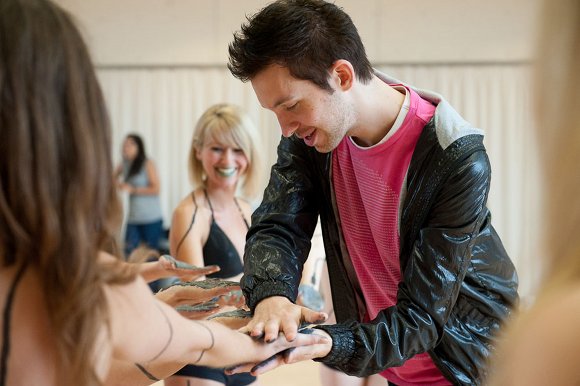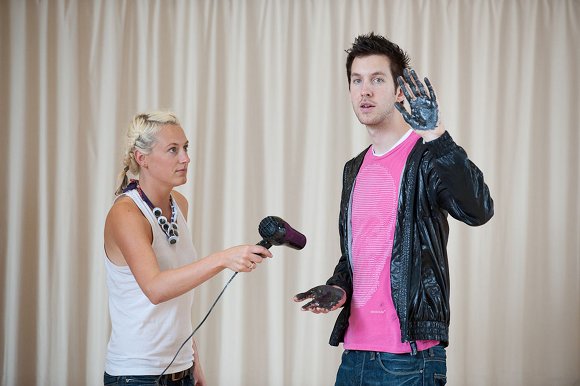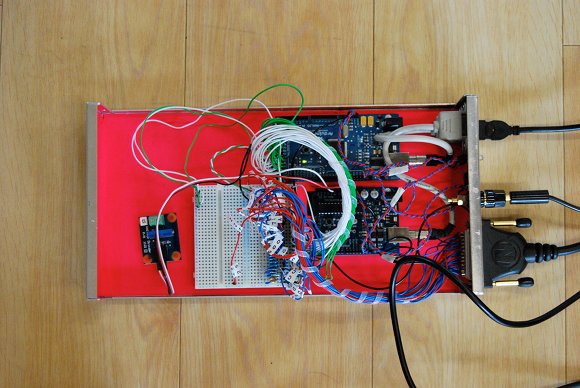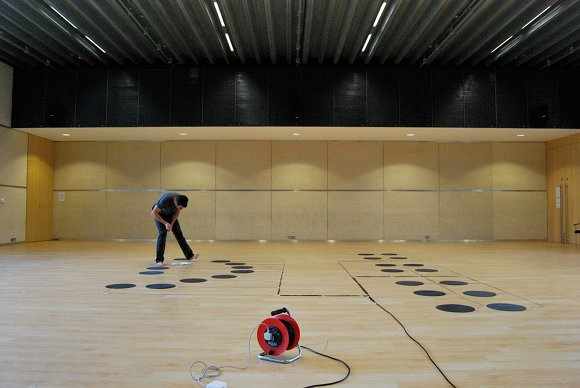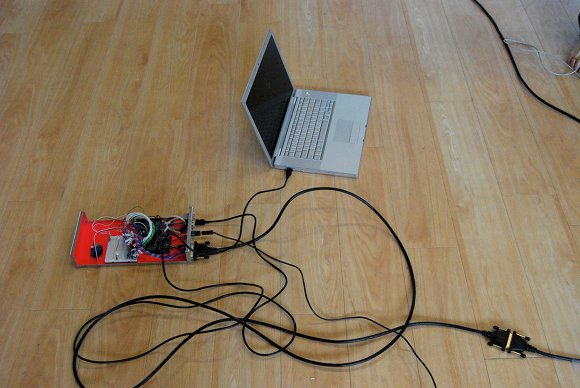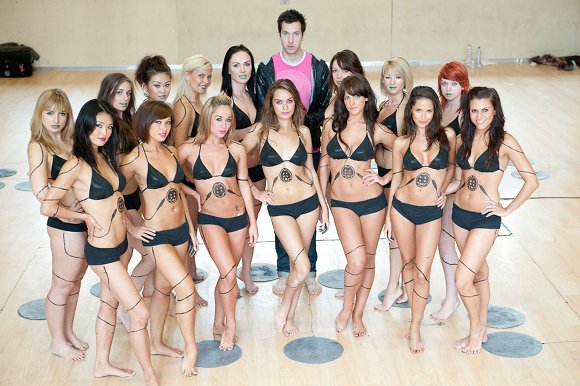Through the power of skin-safe conductive ink, Scottish electronic artist Calvin Harris has collaborated with a team to make a synthesizer out of himself and a group of models in bikinis. That’s just fine, Calvin – now what are you going to use for your remaining two wishes?
The project is the creation of Calvin, Steve Milbourne and Phil Clandillon at Sony Music Entertainment, and four masters students at the Royal College of Art Industrial Design program who created the conductive ink: Bibi Nelson, Becky Pilditch, Isabel Lizardi and Matt Johnson. Johnson programmed the interface and music: two Arduinos provide the analog-to-digital connection between the ink-human circuitry and a computer. Patching environment Max/MSP then deals with the data and translates to MIDI, and musical materials are sequenced live and “performed” into Ableton Live. As seen on Engadget and sent in by a number of readers (thanks!) as well as the creative team that did it.
Team member Steve Milbourne writes us with full details and extra behind-the-scenes shots. I wanted to know how they put this together and if there were any false starts or experiments necessary to get it right. He responds:
We read about the conductive ink ‘Bare’ that the students at the RCA (Royal College of Art) had invented and we thought it was pretty cool. We wondered if we could make some kind of musical instrument from it, so we spoke to Calvin and asked him if he’d be up for collaborating.
After quite a bit of mulling over various methods of doing it, we decided to try and create a choreographed routine where people touching hands would close the circuits and trigger sounds somehow.
With the help of the guys from the RCA we began to draw a schematic for the synth, and conceptualize how it would operate, we eventually decided on a layout and that we’d control it using MIDI, by connecting the paint ‘electrodes’ to an Arduino which connects to Max/MSP. This then controls individual tracks in Ableton, and in the live mode automatically quantized them on the fly as the performance took place.
Behind the scenes it was two days of setting up, testing, and working out the routines before the day we filmed it. On the day we spent the morning letting the dancers rehearse and get the timing more or less right (so the notes were quantized into the right places at the BPM running in Ableton, a bit slower than the original track, but dancing at 140bpm was a little difficult for them!) and then we filmed several takes before we got one we were happy with.
False starts, well it took a while to get it all together. At times it seemed like it might not be completely possible. The conductive ink worked better on some people than others (due to a lot of scientific variables such as… how much salt they have in their body, how sweaty they were etc), but the RCA students went through a number of different variants of the paint to get it exactly right.
We messed around with painted pitch bends as well as ribbon controllers on peoples arms – which actually worked too, but we couldn’t fit them into the performance as they weren’t ‘quite’ reliable enough. Cool though.
As to Calvin’s other wishes.. I’m not sure what more you can ask for than a human synthesizer made up of 16 attractive girls in bikinis! 😉
Fair enough!
In the interest of gender balance, I can think of a few female electronic artists who certainly deserve to turn the tables on the roles here, however.
The ink itself is fascinating, and winks and nods about models aside, it’s terrific to see electronics getting closer to the human body and physical movement. For more on the ink and how it’s used:
http://www.bareconductive.com/index.html
More on Calvin Harris:
http://www.calvinharris.co.uk
Photos courtesy Sony; used by permission.
